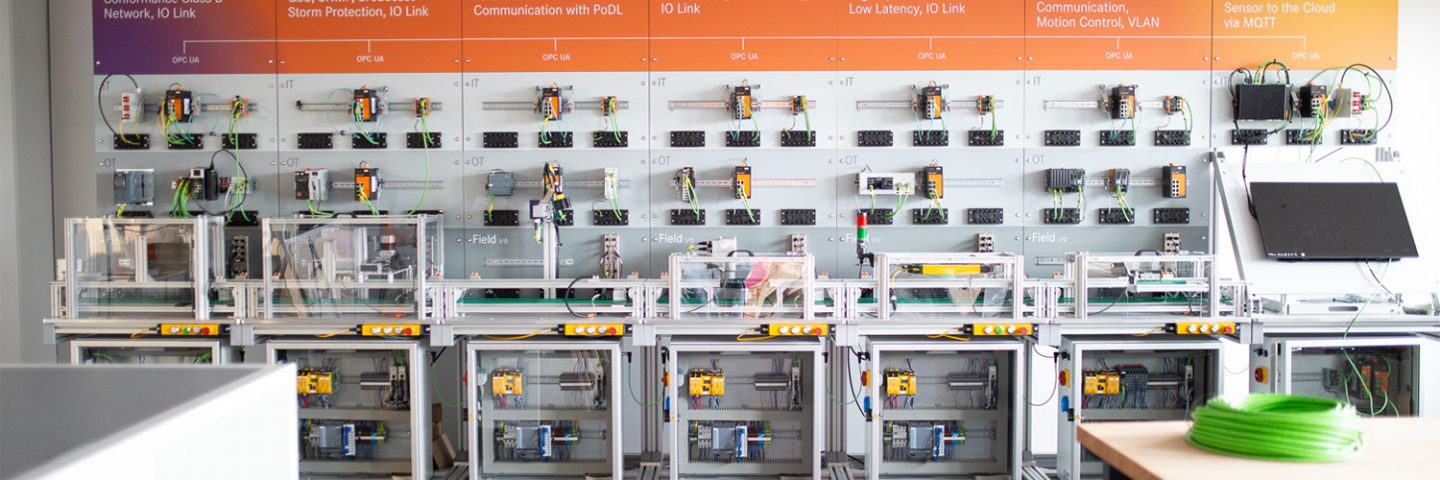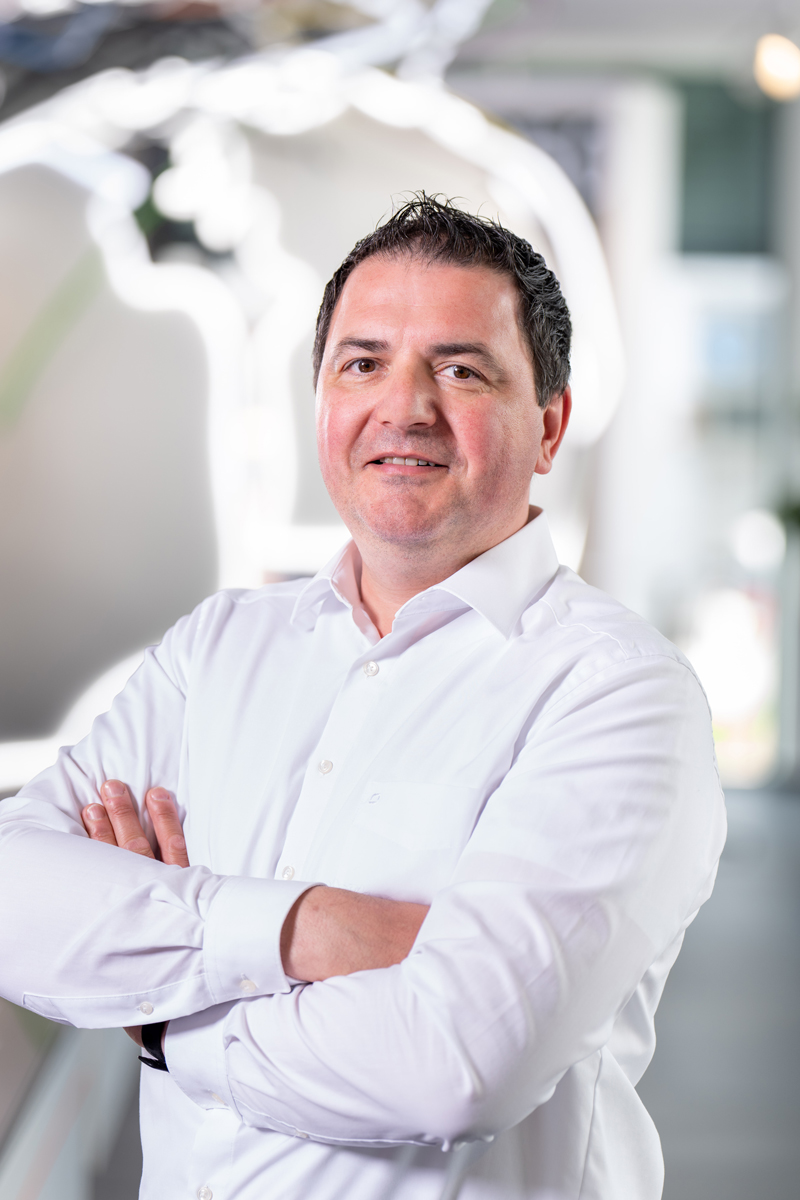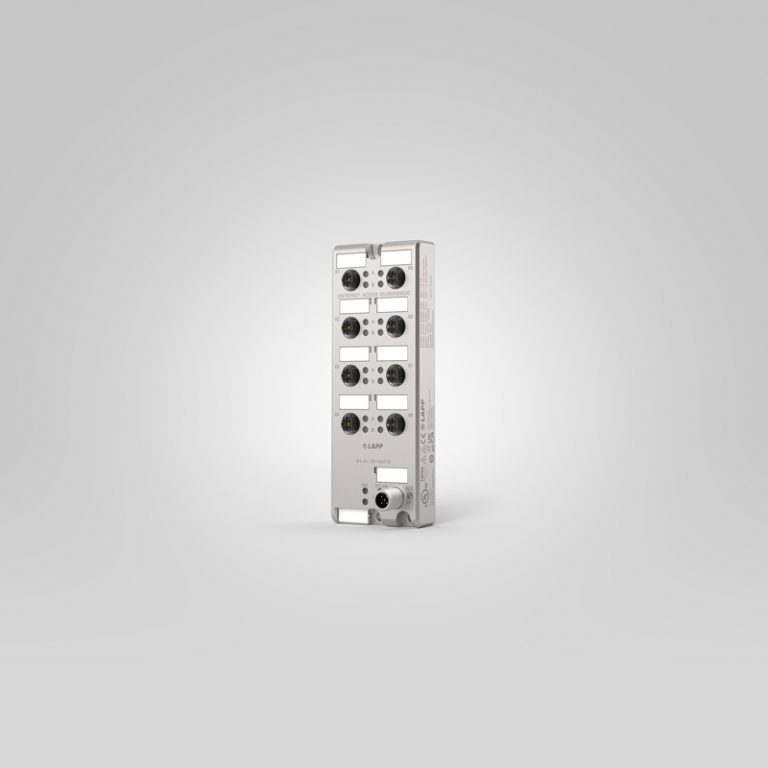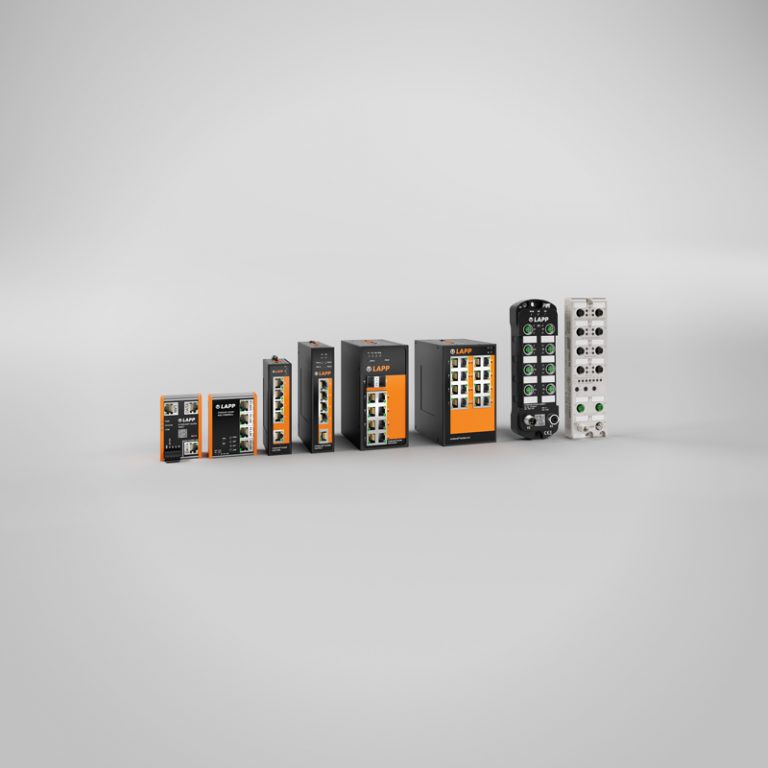
IO-Link is playing an increasingly important role in industrial automation. What makes this communication standard so attractive?
“IO-Link is an established point-to-point communication standard that is increasingly replacing classic digital and analogue signal transmission in many areas. Unlike simple binary signals, IO-Link transmits structured data – up to 32 bytes per communication cycle. In addition to recording process values, this also enables diagnostic functions, remote parameterisation and easy device replacement via plug-and-play. This is made possible by inexpensive, unshielded standard cables. IO-Link is therefore the ideal solution for the field level – the lowest level of the automation pyramid, where signals are recorded and transmitted.”

LAPP is a specialist in connection technology and has now rounded off its portfolio with its own remote I/O devices since the end of 2024. How did this come about and what added value do these devices offer?
“We already cover the control level with our proven ETHERLINE® ACCESS switches and routers. Now we are going one step further: with the new UNITRONIC® ACCESS remote I/O components, i.e. the IO-Link masters and hubs, we are bringing active components to the field level for the first time. This means we can offer our customers the complete infrastructure for industrial- e networks: active and passive components from a single source, including end-to-end connectivity from the sensor to the controller or even to the cloud.”
What advantages does this offer specifically for machine and plant engineering?
“Quite clearly: decentralisation, flexibility and cost savings. In many applications, such as intralogistics, it is inefficient to wire each sensor individually in the control cabinet. Thanks to protection classes IP67 and IP69K, our UNITRONIC® ACCESS modules can be installed directly in the plant. This saves space, significantly reduces wiring effort and thus lowers the susceptibility to errors. At the same time, IO-Link enables the easy integration of digital sensors and existing standard cables can continue to be used without any problems. Another advantage is the simple plug-and-play commissioning and automatic parameterisation when replacing a sensor. This not only reduces installation costs, but also maintenance costs.”
What distinguishes LAPP’s remote I/O devices from others on the market?
“The key difference lies in their versatility: our UNITRONIC® ACCESS devices are available as multi-protocol and single-protocol versions. The multi-protocol devices support five common Industrial Ethernet protocols (PROFINET, Ethernet/IP, EtherCAT, Modbus TCP, CC-Link IE) as well as four IoT protocols such as OPC UA, MQTT, REST API and CoAP. Customers can select the desired protocol via a rotary switch without having to make any additional software configurations. In addition, robust metal housings and a wide temperature range from -40 to +70°C ensure reliability under harsh conditions. This commitment to quality is already evident in the manufacturing process: as a family-owned company based in Stuttgart, we produce our remote I/O devices in Germany, ensuring short delivery times and the highest quality standards.
The systems have been running in many plants for years. How are they integrated into existing automation solutions?
“Surprisingly easy: customers can continue to use their existing M12 standard cables and gradually replace existing digital sensors with IO-Link-enabled devices. Configuration is carried out via an intuitive web interface and when a sensor is replaced, its parameters are automatically transferred – it’s true plug-and-play. Connection to higher-level IT systems or clouds is also seamless thanks to the integrated IoT protocols.”


What are typical areas of application for LAPP’s remote I/O devices?
“UNITRONIC® ACCESS is suitable wherever many sensors and actuators need to be detected or controlled decentrally. The areas of application therefore range from conveyor technology and mechanical engineering to the food and automotive industries. This is particularly interesting for OEMs that operate internationally. Thanks to multi-protocol support, they can work worldwide with a single device type, regardless of the fieldbus standard used. This ensures maximum flexibility in the development of modular machines and simplifies integration into heterogeneous plant environments.”
And what developments can we expect from LAPP in the future?
“Our remote I/O devices are not a one-off project, but part of a comprehensive strategy. We are continuously working to expand our portfolio, for example with complementary diagnostic and visualisation solutions. Anyone who would like to experience this live is welcome to visit our LAPP Exploration Centre in Stuttgart. There, we demonstrate in a practical way how modern connection technology can already be used today to meet the requirements of tomorrow.”
Thank you very much for talking to us!
